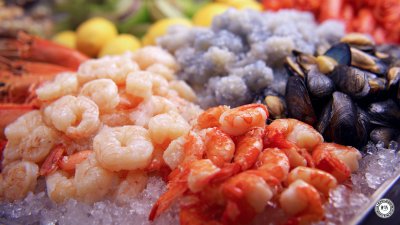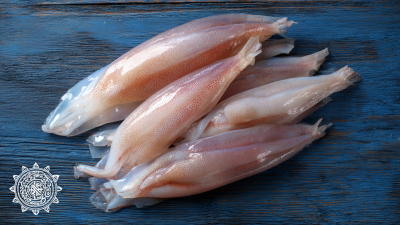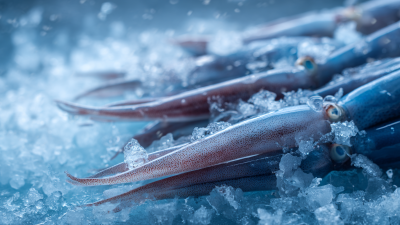In recent years, Frozen Surimi Sticks have gained popularity as a convenient and tasty seafood alternative that appeals to a wide range of palates. These versatile products are made from processed fish, typically resembling crab or shrimp, and are praised for their affordability and ease of preparation. As consumers become more health-conscious, the demand for high-quality Frozen Surimi Sticks has grown, leading manufacturers to innovate and improve their offerings. That raises an important question: how does one choose the best Frozen Surimi Sticks in 2023?

Selecting the ideal Frozen Surimi Sticks involves understanding both health benefits and flavor profiles. In a market flooded with options, discerning the differences between brands and their ingredients can be challenging. Health-conscious consumers need to look beyond the packaging and delve into the nutritional value of these products. Factors such as the type of fish used, the presence of additives, and overall calorie content play crucial roles in making a tailored choice. Additionally, flavor variations and cooking methods can significantly impact the taste experience, highlighting the importance of understanding one's culinary preferences.
This comprehensive guide aims to streamline your decision-making process by outlining key considerations when purchasing Frozen Surimi Sticks. From recognizing top brands to evaluating nutritional information, you'll be equipped with the insights needed to make an informed choice that balances health and flavor in your meals. As we explore the best options available in 2023, we invite you to discover delightful recipes and preparation tips that will allow you to savor this delectable seafood alternative at its finest.
When selecting frozen surimi sticks, a critical factor to consider is the protein content and its source. According to the Food and Agriculture Organization (FAO), surimi typically contains 10-12% protein by weight, but the quality and source of that protein can vary significantly between products.
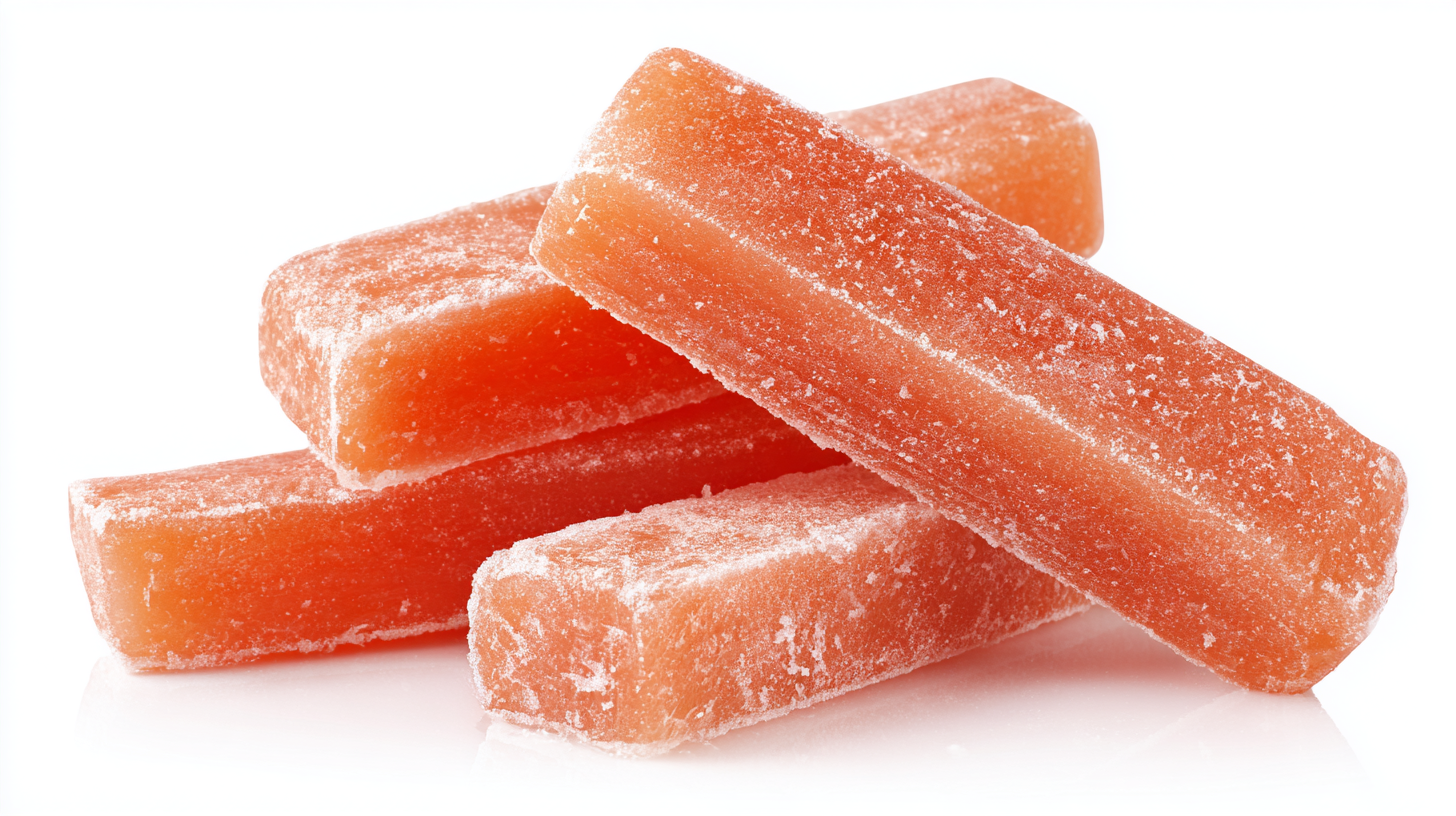 Higher-quality surimi sticks, often derived from wild-caught fish like Pollock, boast a more favorable amino acid profile and are generally deemed healthier. Reports indicate that surimi sticks with at least 12 grams of protein per serving are preferable for those seeking nutrient-rich options.
Higher-quality surimi sticks, often derived from wild-caught fish like Pollock, boast a more favorable amino acid profile and are generally deemed healthier. Reports indicate that surimi sticks with at least 12 grams of protein per serving are preferable for those seeking nutrient-rich options.
Additionally, consumers should evaluate the source of the surimi. A study from the Journal of Food Science highlighted that sticks made from sustainably sourced fish contribute not only to better health outcomes but also to reduced environmental impact. Look for certifications such as the Marine Stewardship Council (MSC) label, which guarantees that the fish used in surimi production is caught sustainably. By focusing on protein content and sourcing, consumers can make choices that align with both their health goals and environmental values.
When choosing frozen surimi sticks, health-conscious consumers should prioritize understanding nutritional labels. The front-of-pack nutrition labels (FoPLs) have emerged as vital tools to assist consumers in identifying healthier food options. With nearly half of consumers globally expressing a preference for clean label ingredients, transparency in labeling becomes critical in guiding purchase decisions. Ingredients should be easily recognizable, and those with clean labels tend to attract more trust among consumers. As the clean-label market rapidly expands, understanding what to look for on these labels is paramount for maintaining a nutritious diet.
In addition, the evolving landscape of consumer awareness emphasizes the importance of nutrition education. A recent study highlighted that young consumers are actively seeking reliable information on food labels to make informed choices. This indicates a growing trend where consumers want clear, honest disclosures about what they are consuming. As dietary choices continue to be influenced by a balance of health and sustainability, the insights gleaned from nutritional labels can empower consumers to make food selections that align with their health goals while enjoying the flavors they love.
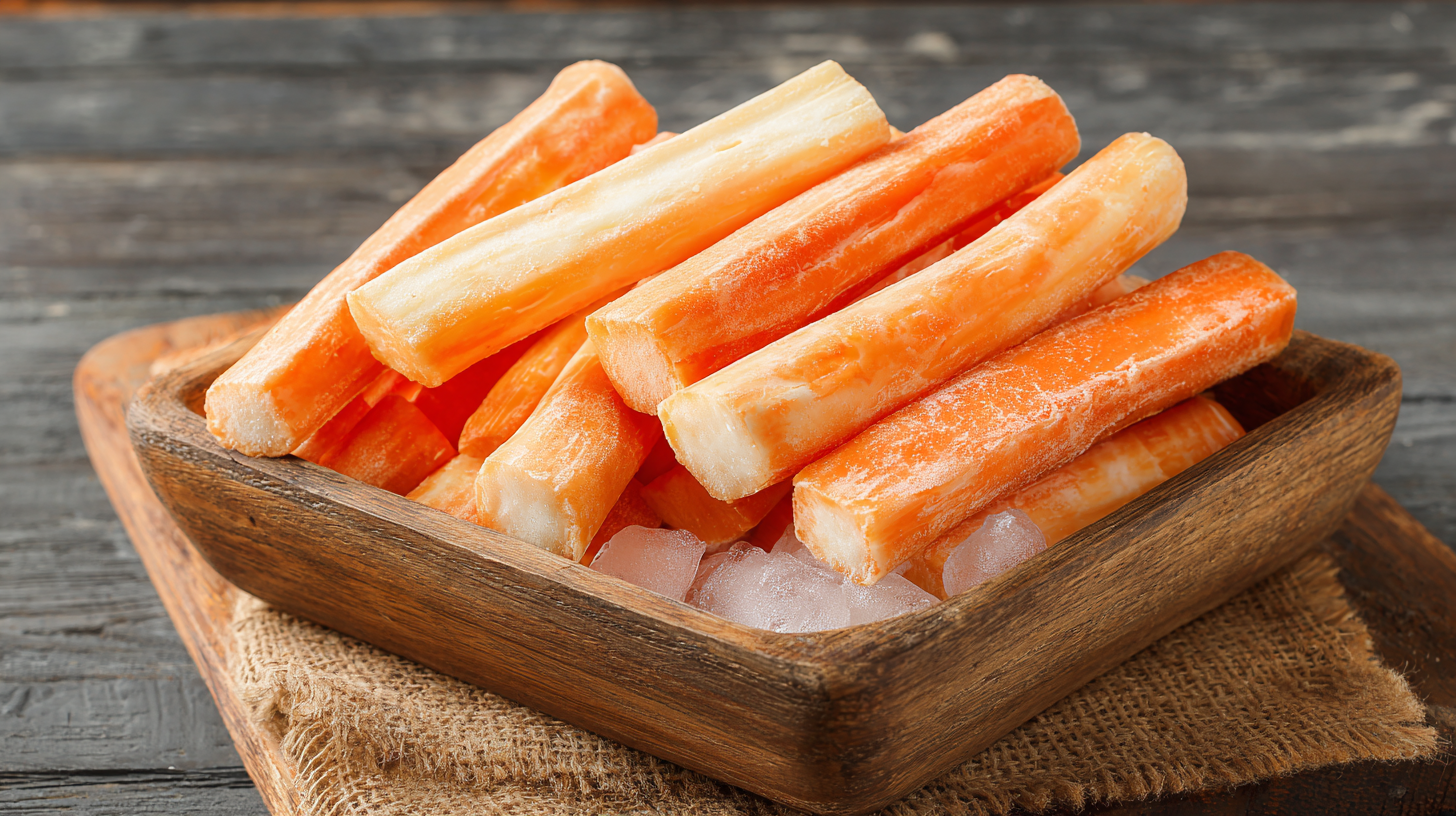 When selecting frozen surimi sticks, flavor profiles play a crucial role in enhancing your overall culinary experience. Different additives and seasonings can significantly influence the taste and texture of surimi products. For instance, some brands incorporate natural flavors derived from seafood or seaweed, which can add a hint of authenticity and richness. Others might use artificial flavors that can either elevate or detract from the overall quality. Always read ingredient labels to ensure you are choosing a product that aligns with your taste preferences and health goals.
When selecting frozen surimi sticks, flavor profiles play a crucial role in enhancing your overall culinary experience. Different additives and seasonings can significantly influence the taste and texture of surimi products. For instance, some brands incorporate natural flavors derived from seafood or seaweed, which can add a hint of authenticity and richness. Others might use artificial flavors that can either elevate or detract from the overall quality. Always read ingredient labels to ensure you are choosing a product that aligns with your taste preferences and health goals.
Tips: Look for surimi sticks that use minimal additives for a cleaner flavor. Ingredients like garlic powder, onion powder, or citrus zest can enhance the taste without the need for artificial ingredients. Also, consider brands that highlight their seasoning choices in their marketing or packaging, as this could be an indicator of a carefully crafted flavor profile.
Additionally, the choice of breading or coating can further impact the taste. Some surimi sticks are lightly breaded with panko or cornmeal, providing a satisfying crunch without overpowering the delicate seafood flavor. Experimenting with different brands and their specific seasoning blends can help you find the best match for your palate while ensuring a healthier snacking option.
When selecting frozen surimi sticks, sustainability in production should be a top priority for health-conscious consumers. The surimi industry has been responding to growing demand for eco-friendly practices, aligning with global efforts to reduce environmental impact. As surimi is often made from fish stocks, brands that prioritize sustainable sourcing are crucial. Reports indicate that the crab meat market is anticipated to grow significantly, reaching USD 963.8 million by 2025, which highlights the importance of sustainable harvesting practices as the popularity of seafood alternatives rises.
Additionally, the trends in packaging align with sustainability goals. The stick packaging market is expected to grow from USD 341.14 million in 2023 to USD 547.63 million by 2032, reflecting a shift towards more environmentally friendly materials and processes. Choosing eco-conscious brands that utilize sustainable fishing practices and responsible packaging not only enhances flavor but also contributes to the health of marine ecosystems. In light of these developments, consumers are encouraged to research brands that prioritize both flavor and environmental sustainability in their surimi products.
When it comes to preparing frozen surimi sticks, the right cooking techniques can significantly amplify their flavor. One effective method is to pan-fry the surimi sticks. Simply heat a bit of oil in a skillet over medium heat, then add the sticks and cook until golden brown. This technique not only creates a crispy texture but also brings out the natural umami flavors in the surimi.
Another fantastic way to enhance flavor is by baking. Preheat your oven to 400°F (200°C) and place the surimi sticks on a baking sheet. Brush them lightly with olive oil and season with your favorite herbs and spices. Baking will result in a slightly chewy texture while maintaining moistness, making each bite enjoyable.
**Tips:** For added flavor, consider marinating the surimi sticks in a mixture of soy sauce, ginger, and garlic for 30 minutes before cooking. Additionally, serving them with a homemade dipping sauce, such as a spicy mayo or tangy ponzu, can elevate the dish further and make it a delightful treat for any occasion.
| Category | Attribute | Details |
|---|---|---|
| Nutritional Value | Calories | Approx. 80-100 per serving (100g) |
| Nutritional Value | Protein | Around 10-15g per serving |
| Additives | Preservatives | Free from artificial preservatives is preferable |
| Flavor | Taste Profile | Mild seafood flavor, suitable for various dishes |
| Preparation Techniques | Baking | Crisps exterior, retains moisture |
| Preparation Techniques | Frying | Adds richness, enhances flavor |
| Preparation Techniques | Boiling | Quick, maintains delicate texture |
| Serving Suggestions | Dipping Sauces | Pairs well with spicy mayo or soy sauce |
| Serving Suggestions | Salads | Great addition to seafood salads |
